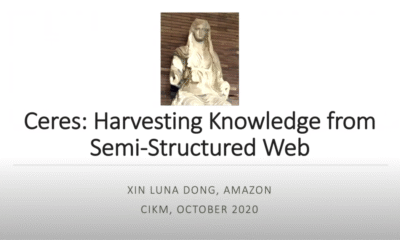


At the Amazon Store, we strive to deliver the product recommendations most relevant to customers’ queries. Often, that can require commonsense reasoning. If a customer, for...



Amazon principal applied scientist Jens Lehmann and three coauthors recently received the Semantic Web journal 10-year award for their paper “LinkedGeoData: A Core for a Web...



Question answering is a popular task in natural-language processing, where models are given questions such as “What city is the Mona Lisa in?” and trained to...



Knowledge graphs are an extremely efficient way to represent information, but the standard techniques for analyzing them, which involve tracing connections through a graph one hop...



Xin Luna Dong, a senior principal scientist at Amazon, leads research on Amazon’s product graph, a huge graphical representation of the products in the Amazon Store and...



Data-to-text generation converts information from a structured format such as a table into natural language. This allows structured information to be read or listened to, as...



Question-answering systems frequently rely on knowledge graphs, large collections of facts about real-world entities (people, organizations, countries, etc.). To make use of the information in knowledge graphs,...



Amazon was a Silver sponsor of the 2020 Conference on Information and Knowledge Management (CIKM), which provides an international forum for presentation and discussion of research...



Knowledge graphs are data structures that capture relationships between data in a very flexible manner. They can help make information retrieval more precise, and they can...



The International Labor Organization estimates that today, more than 24.9 million people around the world are victims of human trafficking. Nearly 20% of these victims are...